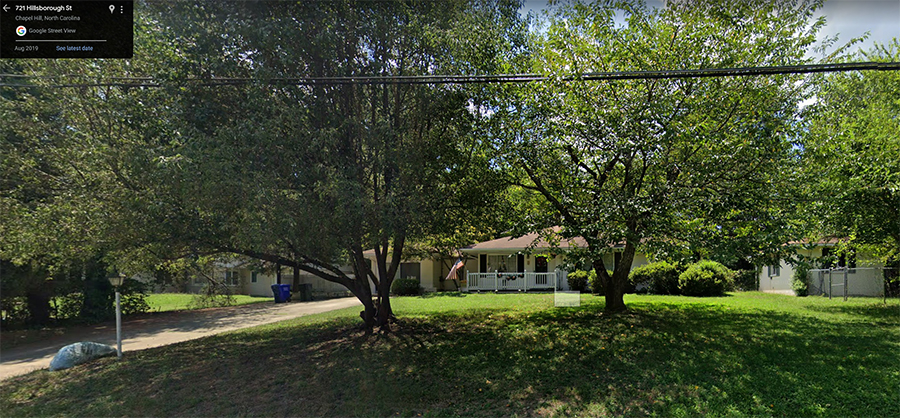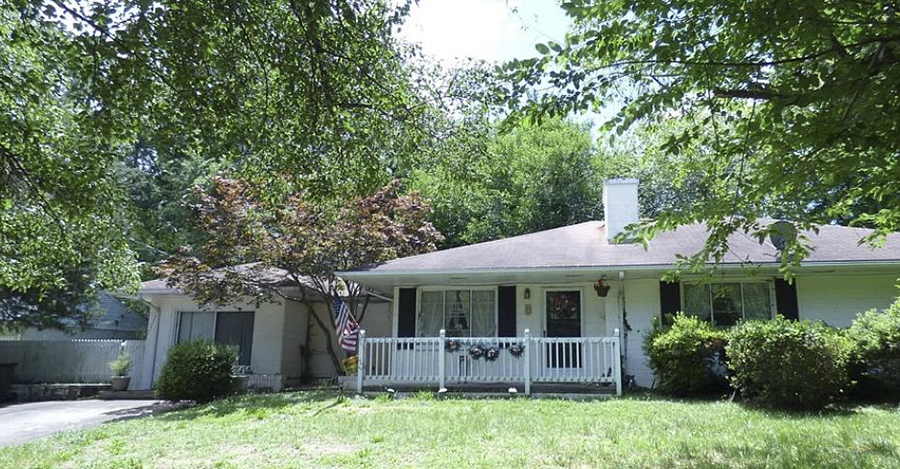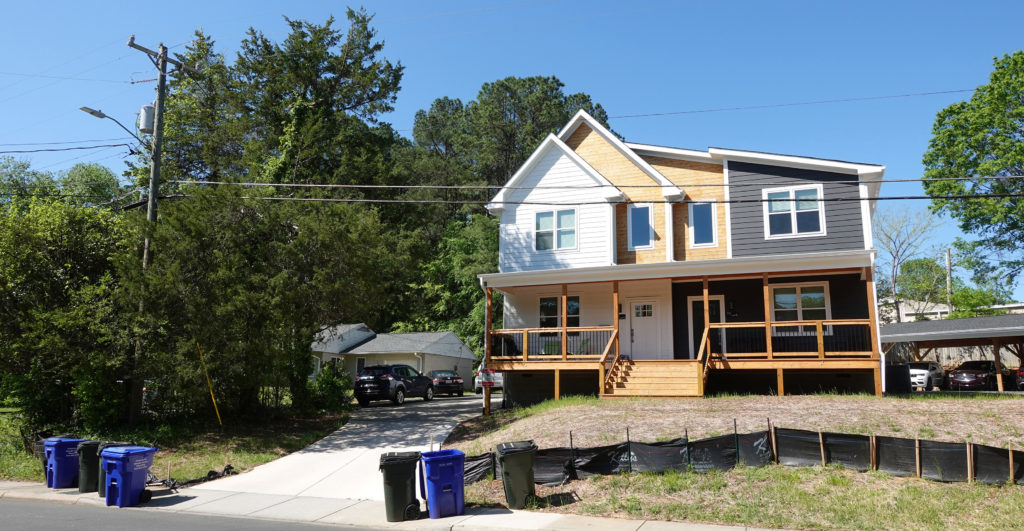This case demonstrates how developers can buy relatively expensive single family homes, tear them down, and build lucrative student rental duplexes.
Developers could do even better by buying the many less expensive houses in family neighborhoods around town, and they will be able to do that if single family neighborhoods lose R-1 zoning protections, which could well happen in June.

This 1950s house at 721 Hillsborough Street and both houses next door ended up in an R-4 zone surrounded by development. It is shown as it was in August 2019 (from Google Maps street view).

A developer bought the home in March 2021 for $530,000. Because of the R-4 zoning, this was a relatively expensive home. It was 17 percent higher than the typical home value in Chapel Hill then of $452,880; it is $577,881 today. (Zillow.com)

This duplex replaced the house at 721 Hillsborough. Each unit has four bedrooms with an advertised rent of $3,400 per unit, a total of $6,800 for the two units.
The remaining ranch house at 719 Hillsborough can be seen at the left of the photo.
That these units are intended for student renters rather than families is evidenced by the number of cars parked in the shed that stretches across the back yard and by the four-bedroom design.

A second identical duplex replaced the neighboring 723 Hillsborough, so there are now two duplex apartment buildings in a row, for a total of 16 bedrooms yielding a total of $13,600 in monthly rent.
Could a moderate-income family afford to rent one of these apartments?
Moderate-income families might have difficulty paying $3,400 monthly rent, the total amount paid per apartment by students in this case, so it is debatable whether these two duplexes could be considered “affordable housing.”
In a college town where the university enrolls 31,500 students and high-tech jobs are available nearby, developers likely will be marketing to students, as in this case, or to young professionals who can afford the rent.
The 28/36 rule of thumb of mortgage lenders is that total house payments (mortgage interest, insurance, and taxes) should not exceed 28 per cent of a family’s income, and that total plus the addition of other debt payments should not exceed 36 percent of income. To meet the 28 percent standard, a family paying rent of $3,400 per month would need monthly income of at least $12,143 per month, or $145,700 per year.
A family that could afford monthly rent of $3,400 could instead afford to purchase a moderately-priced home in a single family neighborhood.
For example, it could instead buy a single family home priced at as much as $530,000 with nearly the same total monthly payments, depending on the down payment together with income and credit rating. Home buyers are often required to put down 20 percent as a down payment ($106,000), in which case the monthly payment would be $3,216, and according to the 28/36 rule they would have to have an income of about $138,000 to qualify for a mortgage. With only a 10 percent down payment ($53,000) the monthly payment would be $3,710 and require an income of about $160,000 to qualify at current mortgage rates. (Zillow.com and local real estate sources)
If the Town Council approves proposed zoning law changes in June as expected, developers would be allowed, for the first time, to build duplexes in single family residential neighborhoods now zoned R-1.
— Don Liner
